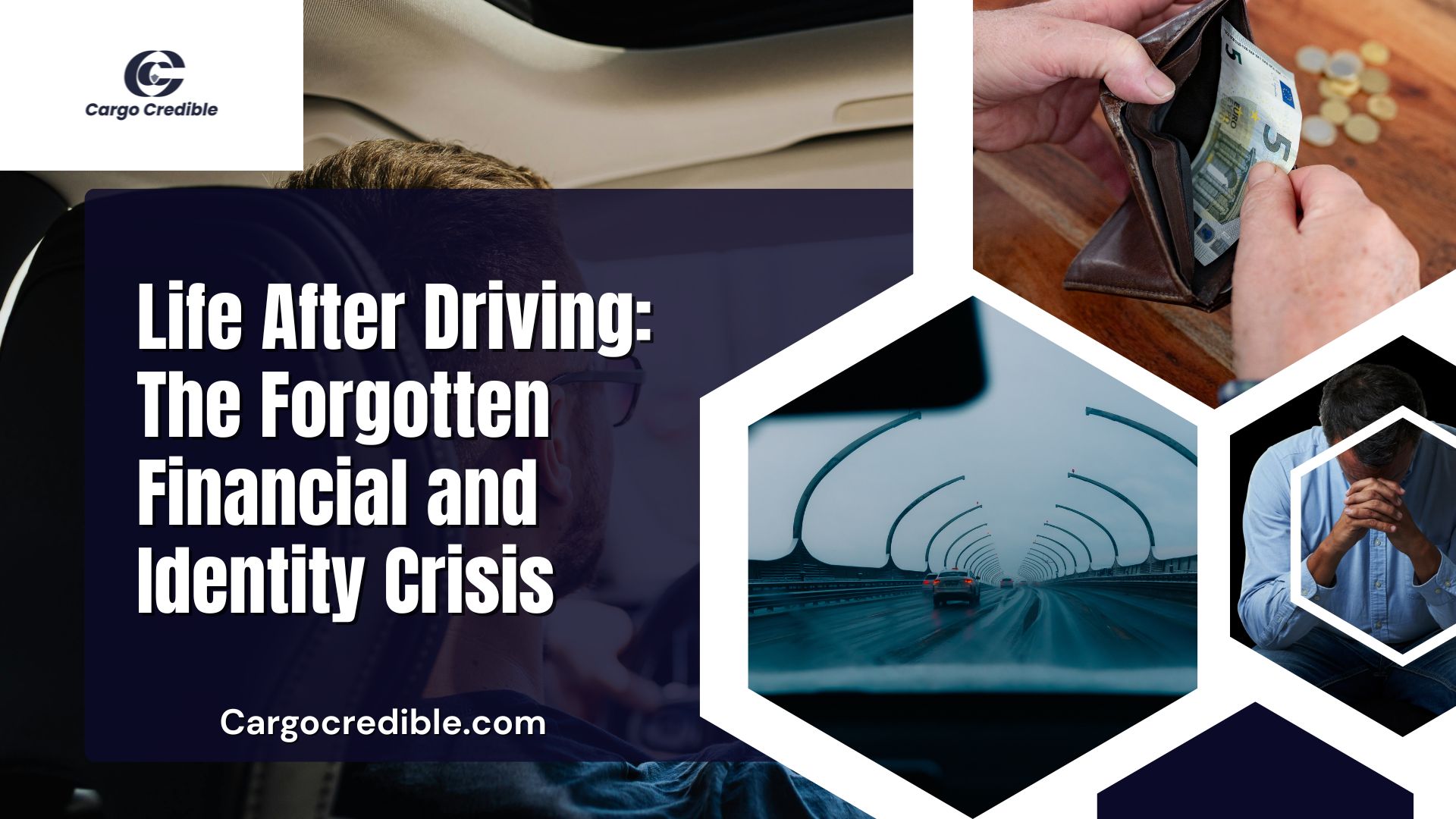Life After Driving: The Forgotten Financial and Identity Crisis

You’ve spent your whole life on the road — the hum of the engine, the smell of diesel, the steady rhythm of tires meeting asphalt. You’ve delivered goods that feed families, build homes, and stock stores. The road became your home, your paycheck, your pride. Then one day, the keys are taken away. Not because you did something wrong — but because time, health, or circumstance said, “That’s enough.” And just like that… your life takes a sharp turn off the highway.
The Hidden Struggle
When people think of truck drivers, delivery workers, bus operators, or taxi drivers, they see strong hands and long hours. But what they don’t always see is the heart behind the wheel — the person who wakes up early, fights fatigue, and keeps our world moving. Now, when that person can’t drive anymore, retirement isn’t a smooth road — it’s a sudden stop. And that stop brings three heavy passengers: financial stress, loss of identity, and emotional struggle.
The Financial Roadblock: When the Money Stops Rolling
Driving pays the bills — but what happens when the driving stops? Most drivers earn based on miles driven or hours worked, with rarely a retirement plan, savings account, or pension waiting at the curb. Many live paycheck to paycheck, with savings eaten up by family needs, emergencies, or truck repairs. Early retirement due to health issues often leaves no safety net. When the keys are hung up, income disappears overnight — but bills don’t. Rent, medicine, food, insurance, and sometimes debt keep coming. It’s like trying to drive a rig with no fuel: you want to keep moving, but you simply can’t.
The reality is stark: 63% of truck drivers report they have not saved enough to retire, with only 22% claiming sufficient funds for comfortable retirement. The challenge applies across company drivers and leased owner-operators alike. Many continue driving well into older age because they either love the job or cannot afford to stop. For instance, 26% plan to drive as long as health permits, and an additional 32% remain undecided on retirement timing. Expenses inherent to the profession—food, showers, roadside parking—add to financial pressures and reduce ability to save. Without employer-sponsored retirement plans, drivers must navigate savings largely on their own, often unsuccessfully.
The Identity Breakdown: “If I’m Not a Driver, Who Am I?”
Driving isn’t just a job — it’s a way of life. The open road becomes ingrained in the soul. The radio is a daily companion. The map is the world. Drivers see sunsets most never witness and develop patience few can understand. When driving stops, many feel lost inside. Without the daily routine, sense of purpose, and connection to the road, life can become quiet, even empty. The phone rings less often. Drivers ask themselves, “Who am I now that I don’t drive?” This identity crisis is not just existential; it cuts deep emotionally, often leading to loneliness and sadness.
The Emotional Journey, The Loneliness, Fear, and Rediscovery
Ironically, while driving can be lonely, not driving can feel even lonelier. Many retired drivers face depression, anxiety, isolation from health or mobility issues, and the fear of being forgotten by an industry they helped build. Yet a second act is possible. The same focus, patience, discipline, and reliability that made them great drivers are valuable in other roles. Retired drivers have successfully transitioned to:
- Fleet safety coordinators
- Driving instructors
- Dispatch operators
- Warehouse supervisors
- Podcast hosts or authors sharing life on the road
Building a Future for Life After Driving
More conversation is urgently needed—not just about getting drivers on the road but about supporting them when they leave it. Industry and society can help by:
- Creating “Second Act” programs pairing retired drivers with mentoring or part-time roles
- Partnering with financial advisors to teach saving and retirement planning early in drivers’ careers
- Offering health and wellness programs to extend working years and ease transitions
- Valuing retired drivers by listening to their stories and supporting organizations that help them find new purpose
The Human Element Behind Every Mile
Every mile driven was made possible by people who gave up comfort and time with family to keep the world moving. When that chapter ends, they deserve more than silence—they deserve respect, opportunity, and understanding. Life after driving doesn’t have to be a dead end; it can be a new beginning. The journey continues, just in a new form.
This comprehensive perspective sheds light on the unseen struggles faced by professional drivers after their driving careers end, describing financial realities, the profound identity changes, emotional challenges, and promising pathways to second careers. It calls on the trucking industry and society to support these hardworking individuals through this critical transition for a more sustainable and respectful future.
Comments (0)
- No comments yet.